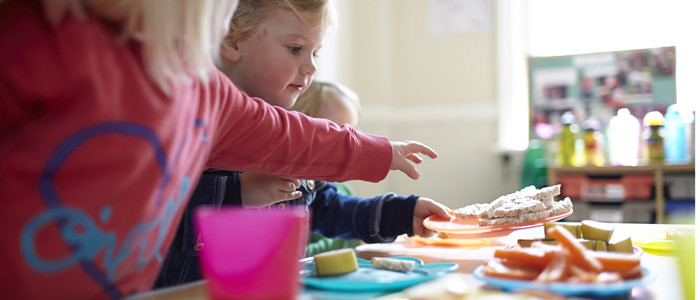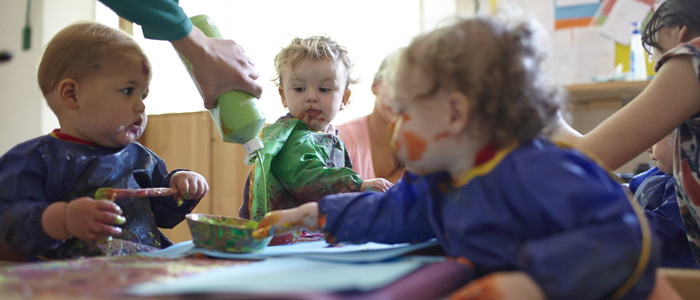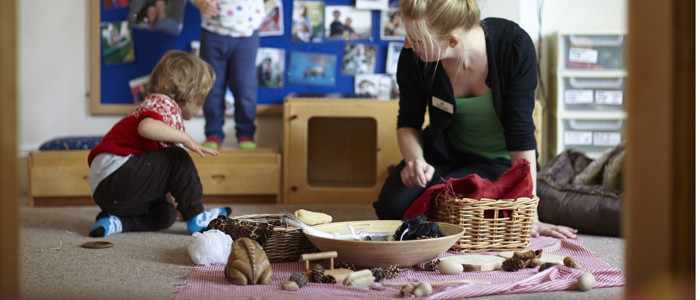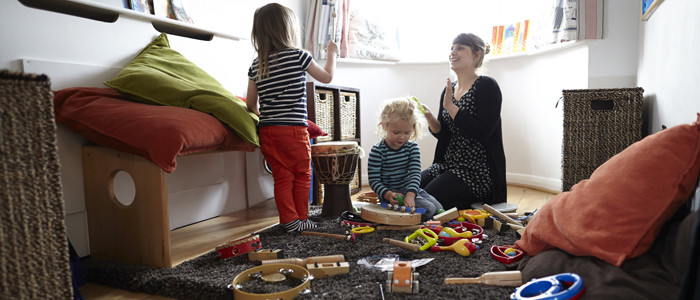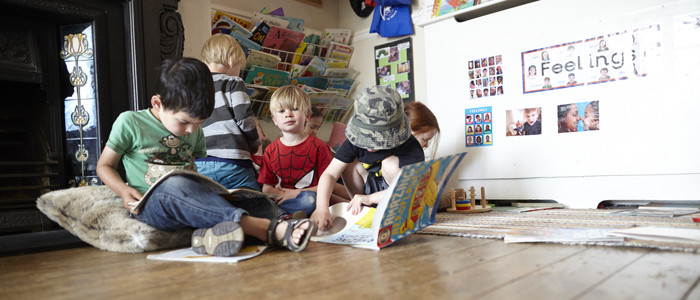Ofsted Rating
The first thing people say when they visit our setting is that it really feels like a “home from home” in every sense . Home from Home Worthing is set across two large victorian buildings with a wrap around garden dedicated to different types of learning and play. The children move freely through familiar homely rooms and the harmonious décor, original features and large windows create a relaxed and warm atmosphere.
Babies are based on the first floor of the main building set across 7 rooms and the children move between light and airy playrooms and a dedicated sleep room.
Our Toddlers are based on the ground floor of the main building set across 7 spacious rooms with easy access to the garden
The Pre-School at Worthing is set in the ‘Coach House’ a separate building adjacent to the Main building where children can access rooms set up for Sensory activity, Art and messy play, construction play, reading and role play
All children have full access to the acre of garden consisting of sandy beach, rolling grassland and wooded area with Forest school a daily activity for our Toddlers and Pre School children. Our Pre schoolers also experience Wild Beach in the year before they leave for school. With daily activities and equipment set up to meet the needs of different ages the children are able to roam from area to area enjoying outdoor adventure whatever the weather.
Please see below for our most recent Ofsted Inspection Report
Ofted Inspection report: Home from Home Worthing
21 March 2023 – Overall effectiveness Good
The quality of education Good
Behaviour and attitudes Good
Personal development Good
Leadership and management Good
Overall effectiveness at previous inspection Good
What is it like to attend this early years setting?
The provision is good
Children are happy and settle well in this nursery. They feel safe and have a strong sense of belonging. Staff actively promote children’s independence and curiosity
through a variety of activities. For example, children enjoy investigating their natural environment during forest school sessions. They respond to the rules and boundaries within the outdoor space. For instance, children are ‘green dragons’when they are safely outside the campfire circle, and they understand ‘red dragons’means they could be in danger. Children are aware of the importance of following
these rules to keep themselves and others safe.
Children have ample opportunities to access activities that promote their physical development. Babies show their increasing skills while using physical play equipment. For instance, they climb the stairs and show delight as they go down the slide. Toddlers develop their small-muscle skills as they pinch tweezers together to pick up shredded paper. These activities help to promote children’s physical skills and support their ongoing development in all areas of their learning.
Pre-school children are happy to share their experiences with others. For example, they talk with excitement about the sensory room and explain that this is their
‘favourite place to play’. They can sound out the letter sounds of their name and those of family members. They proudly explain that they have learned this through
‘lots of practice’. All children demonstrate a positive attitude to learning, including children with special educational needs and/or disabilities.
What does the early years setting do well and what does it need to do better?
* Leaders and staff have developed a new approach to their curriculum. Even though this is in its infancy, all staff have a clear understanding of the intentions for children’s learning. Staff provide a broad and well-planned curriculum that
builds on what children already know. Staff thread children’s interests throughout planned experiences. In turn, children show high levels of concentration as activities capture their curiosity.
* Leaders have a secure knowledge of assessing and supporting staff’s practice to further improve their skills. There are effective processes in place, such as staff
observations and various training opportunities, to aid professional development.
This improves the learning experiences for children and helps them to make good developmental progress.
* Children are well prepared for transitions, including to school. Staff develop children’s independence and confidence to support them in their next stage of
learning. Children enjoy carrying out tasks that enable them to make independent choices. For example, children put their own coats and shoes on and freely choose what activities they want to explore
*Occasionally, staff caring for the youngest children do not always make sure that they engage children in purposeful play throughout the day. For example,following lunchtimes, when some staff are carrying out routine tasks, others do
not plan experiences that entice children in effective learning opportunities.
*Staff effectively develop children’s communication and language. They speak clearly, hold conversations and expose children to new words such as ‘hydrate’ and ‘energy’. Staff skilfully read stories and effectively engage children in early
literacy experiences. For example, children eagerly choose to join story time as the staff member reads with enthusiasm and brings the characters to life.
*Children benefit from interactive group times, which staff encourage children to be part of. They enjoy choosing favourite songs and join in with familiar words
and actions. However, on occasions, staff interrupt children’s engagement in group activities, which impacts on their learning experience. Sometimes, children are removed from group times to undertake routine tasks, such as handwashing in preparation for mealtimes.
*Staff provide a highly inclusive environment where children have first-hand experiences of different cultures and diversity. For example, staff share the events they celebrate, such as Chinese New Year and Ramadan. Children
experience these events through learning words in other languages, sampling food and exploring ceremonial clothing.
* Parents report their children are happy. Communication is good and they appreciate daily verbal feedback, as well as valuing real-time updates received through the online systems. Parents report their children’s communication and
language development has improved greatly.
Safeguarding
The arrangements for safeguarding are effective.
All staff have a secure understanding of child protection and their roles and responsibilities in safeguarding. They regularly update their knowledge through training and have a good knowledge of aspects of child protection, including
differing cultural practices and extreme views and behaviours. All staff know the process to follow should they be concerned about a child, as well as what to do in
the event of an allegation being made against a member of staff. Staff assess risk effectively and ensure this is minimised. They also provide children with the skills
needed to start to understand how to keep themselves and others safe.
What does the setting need to do to improve?
To further improve the quality of the early years provision, the provider
should:
*build on staff’s understanding to consistently avoid interrupting children when they are engaged in activities

